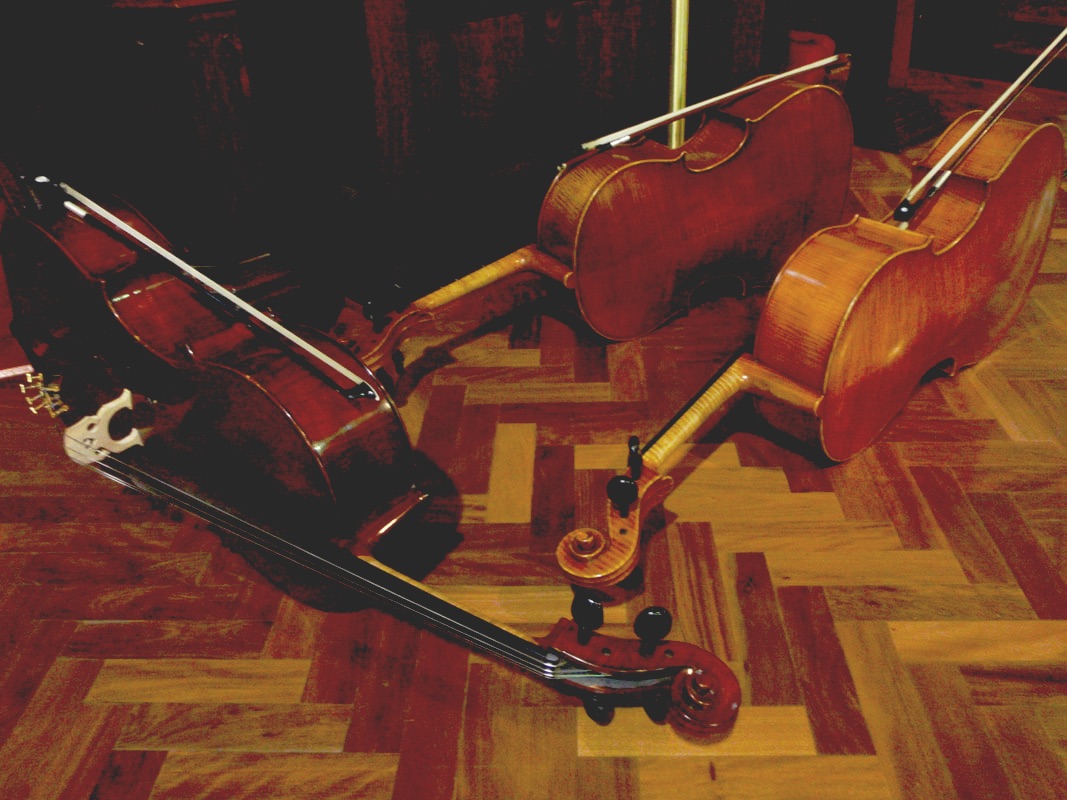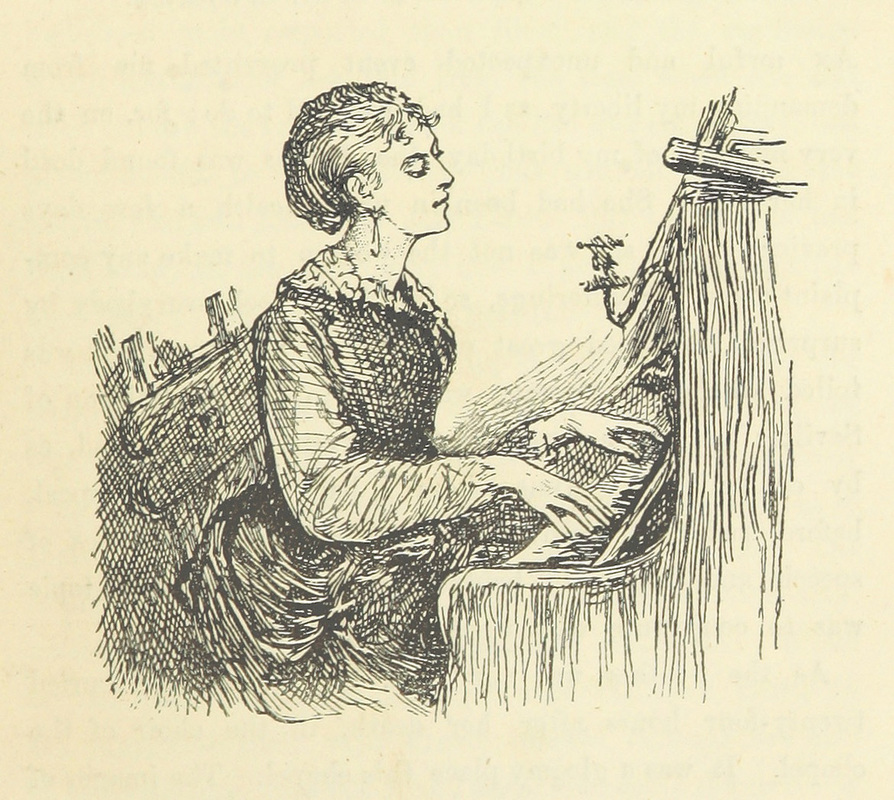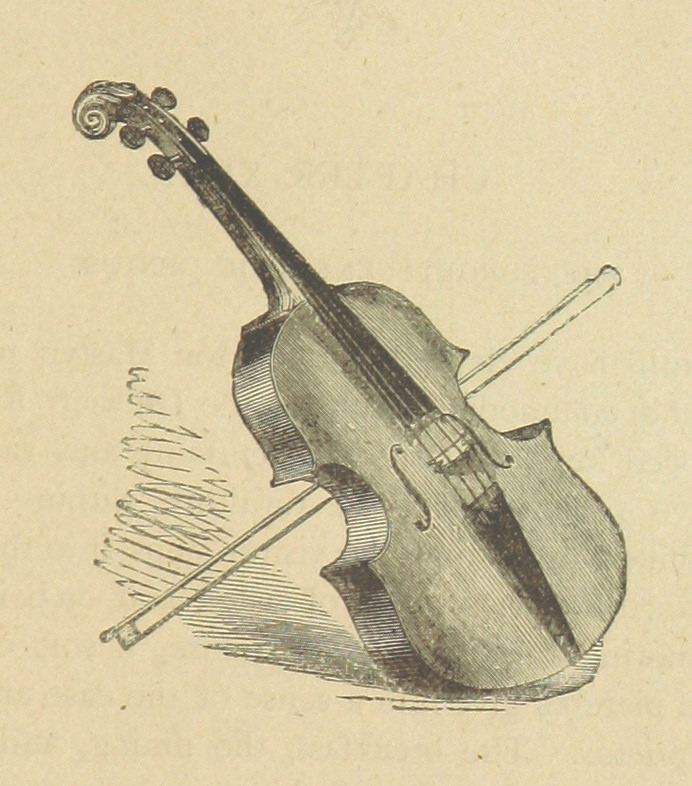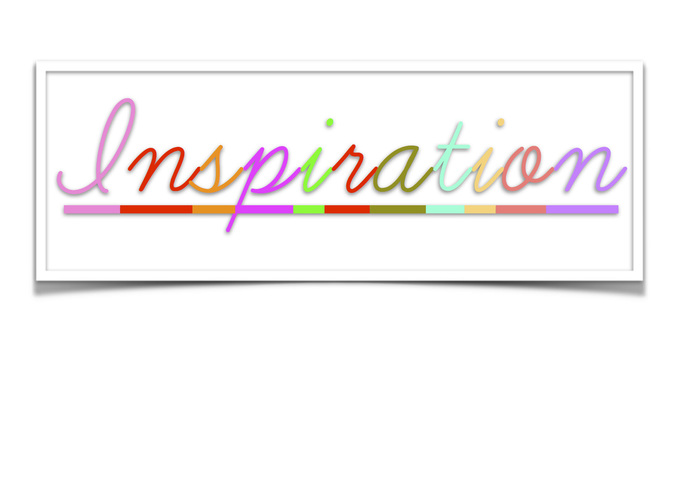|
New Project: Learn Cello Online!
One of my plans for this year is to go live with my first online cello course. If you've wanted to learn cello and have found lessons difficult to access, due to geography, or work commitments, this could be the solution for you. Learn in your own time with:
1 Comment
I have a few new posts I've been working on, loaded with information and resources - they're going to take a while for me to get together, in the meantime, here's a short little post featuring some beginner resources which I find useful, hope you do too (please note, these are affiliate links).
For younger beginners, I nearly always start with Early Start on the Cello by Egon and Kurt Sassmannshaus. The format of this book is very welcoming for young musicians, with very big print, and illustrations throughout. I find it has a great balance between a focus on reading, and aural development - many of the pieces are songs which children will already know. And there are plenty of open string pieces/exercises - a must in my book!
A wonderful method for teaching younger beginners, which I am intending to study (when my little ones are older!) is the Colourstrings method - you can find out more about the method in Australia here. There are two resources below which relate to this method.
For older students, I normally begin with Feuillard's method. This book has dense text, with plenty of reading and technical exercises - I don't sound like I am selling it here, but I really do like this book! it moves quickly onto shifting and more advanced technical concepts. While there are little pieces, in duet format, at the end of each lesson in the book, I do find the need to supplement this book with plenty of outside sheet music (one such example is below - Melodies by Old Masters - technically not for beginners, but can be studied by older students after a few successful months with the Feuillard).
That's all for now, will be back next week with more!
Quick ideas for helping your student or your child build confidence on stage
For the music student, plenty of time goes into developing a good technique and learning repertoire. One aspect of being a musician which is often less considered is the art of performance: getting up on stage, or in front of others, and playing at your best. I believe that practising and performing well are almost like two separate, but obviously interrelated skills, which both need cultivation. Here is a list of a few things your student or child can try to help build confidence on stage. PRACTICE, PRACTICE, PRACTICE...PERFORMING There is nothing which prepares you quite as well for a big exam or concert, as having plenty of practice getting up and playing in front of other people. Take every concert or workshop opportunity which you can find. Ask anyone at home to sit and listen to a performance of your pieces, or you can even organise a small informal run through of your music for friends. PUTTING YOURSELF ON THE SPOT I find that emulating the slightly stressful feeling of performance can be done in a number of ways, including those listed above. One other way which this can be achieved is recording yourself play: the pressure of performing your music for an unforgiving listener, and having to keep playing without stopping are both helpful for emulating some of the sense of a performance. Another way to do this is to launch straight into the most difficult part of a piece, or scale/ arpeggio, without warming up (please use this with caution, for some music a warm up is very necessary/ sensible!) FIND SOMETHING TO FOCUS ON Training your mind to be helpfully directed during performances is crucial. If you spend plenty of time worrying about whether you are playing well or not, or in tune, you are not really going to be helping yourself perform at your best. There are plenty of ways of mentally preparing yourself for performance. One of the things which I like to focus on while performing is creating a beautiful sound, and, particularly in a new venue, how the sound of my cello works in this particular acoustic. Of course, if you are performing with someone, focusing on the chamber music interaction which you have is a very helpful and necessary aspect of the performance for you to be concentrating on. One of the most helpful sources I have found for building performance confidence is The Inner Game of Music by Barry Green and Timothy Gallwey (please note this is an affiliate link). Happy Performing! If you enjoyed this post, please subscribe to my email list here! Teaching vibrato is one area where I feel I can never have enough resources. In this article, I share the two exercises I use to introduce students to the movements involved in creating vibrato. However you choose to apply vibrato, and the historical issues involved, are another discussion - but I do think that students should be able to play with a constant vibrato as a first step, developing a more varied approach to its application later.
Polishing / dusting the fingerboard This exercise develops the up and down movement made by the hand in vibrato, and it is often the first introduction I offer to vibrato.
Oscillations in time
I’m trying something new for a series of posts on Tuesday: blog posts looking at how we find and keep inspiration as musicians, bloggers, writers. Some of the featured articles will include ideas on:
As promised (some time last year…), I have finally created, and posted, my viola listening list! This list took me quite a while to write, as I had a number of decisions to make - what to leave out, what to include etc. I have incorporated a number of spurious works, and works for other instruments which can be played on the viola, in the Baroque and Classical eras, to make the lists of a reasonable size. The Twentieth-century/ Contemporary and Australian lists were another story altogether: the number of substantial and interesting works for viola to be found from the 1900s onwards is remarkable, and I had to (sadly) leave a number of composers and works out, just to finish this project and keep it to a manageable length.
While I know a number of these works myself, there are plenty which are new to me, and which are providing me with some interesting listening - I hope my viola list provides you with the same! If you enjoyed this post, please subscribe to my email list here! Practice! Sometimes fun, sometimes dreary, occasionally a battle - how to get students to practice? Every person is different in terms of what motivates them and keeps them practising music. I've got a few tips below to help you get the year off to a good start with music practice in your home.
1. Set the scene The physical location for practice is very important - there should be enough space, good lighting, and the proper equipment for practice to be undertaken - for a cellist, the right chair, a music stand, and something to prevent the endpin from slipping is crucial. Ideally you want the practice area to be free from distractions (like other children watching tv etc). Keeping the instrument 'ready to go' - for a cello this might mean the case is on the ground and open, or on a cello stand, so the instrument is not completely packed away - also removes another barrier to practising (but please only do this if the instrument is going to be safe from accidents!) 2. Set the time I really believe that most children need assistance to schedule their practice in the beginning. If you can find regular times each day to practice, that's best. It doesn't matter if practice is split into sections or takes place in one sitting. Some students might like to work on technical work in the morning, and pieces in the afternoon after school - try a few different ways of organising practice time, and observe what works best. 3. Practising on one's own or with a parent Parents are crucial in enabling a child to learn a musical instrument. It is ideal (in my belief, necessary) for parents to take notes in lessons and to help with practice at home for very young children - it is easy for a child to forget what was discussed in the lesson, and to not be aware of how that relates to what should be worked on at home. While practice together is a discipline, please note it should also be fun and enjoyable, especially if you want your child to keep playing music in the long term! Try not to get frustrated if your child cannot do everything straight away, music takes time, and they should be commended for small steps towards any musical goals which have been set. Your music teacher knows this, they will have had the same struggles with practice when they were young. Make sure to discuss practice at home with your teacher, and ask them what their expectations are. 4. Time spent practising Sometimes you might want to watch the clock, and do a certain amount of practice, at other times it's not so helpful, and better to focus on completing a set list of practice tasks. I want to put a special note in here for parents of small children: I prefer that practice takes place everyday, and I don't mind in the beginning if that practice session is only five minutes, the daily aspect is much more important to me. Your child's ability to sit and work at music will increase over time. Your teacher may differ on this point. 4. What is the best way to motivate? Obviously, the ideal inspiration for practising would be if a student is driven by their own desire to improve and to work on the music. But it takes time for most young musicians to get to this point, and there are often times where motivation is waning or can be lost. Print out the 30-day practice chart above, and use it to help motivate your child - maybe you might like to include a fun reward at the end for 30 days being completed! This kind of a practice-tracking exercise can often inspire a child to really become engaged with their music, to the point where they will not need a chart like this anymore, I have seen it happen before. This post has covered how to get practising, if you want some more ideas for what to tackle when you practise, consider purchasing The Music Lesson Record Book - notes on practice, room to write all your lesson and practice notes, and a practice idea for each week of the year (plus a create-your-own scales list in the forms version of the book). If you enjoyed this post, and the 30-day practice chart, please subscribe to my email list here! It's been a while in the making, but here it (finally) is: my violin listening list, a partner to the earlier cello listening list. This list does not pretend to be comprehensive, and, asides from being sorted the broad categories of Baroque/Classical etc, the works are not presented in any particular order. There is a mix of works to be found here; works which are played frequently and which represent staples in the violinist's repertoire, and works which are listened to and performed less often, but which I thought might be worth a hearing.
Happy Listening! If you enjoyed this post, please subscribe to my email list here! There is a lot to fit in your weekly music lesson: technical work, learning new repertoire, polishing old repertoire, sight-reading and ear-training all need plenty of time and attention. While most playing-related skills can be easily worked on at home, students don't always have the know-how to go away and develop their relative pitch (or what musicians like to call their 'inner ear'). As students approach the higher grades too in the AMEB syllabus, more is required in terms of the student's ability to distinguish intervals, cadences, and two simultaneously played musical lines, among other things.
Today's post lines up a couple of helpful resources which students can use to develop their ability to recognise intervals. Most reading this post will already know that an interval is the distance between two musical notes, played either together, or subsequently. This is something which will need to be explained further in lessons, but for those with an understanding of what intervals are, here are some places where you can test your interval recognition: VCU Music Theory Sometimes it's useful to identify intervals by recognising them as they are found in songs. The above website very helpfully gives you a list of intervals and the songs where each interval can be found. Teoria.com This great website gives you the chance to customise which intervals you will be tested on; there are also a number of other tutorials on their pages. Musictheory.net Another excellent resource for testing intervals (check on the 'Intervals' link); there are a number of exercises on other aspects of ear-training which this website provides. If you enjoyed this post, please subscribe to my email list here! Today, here's the first in a series of sight-reading sheets for beginner cellists. Today's sheet has one week of sight-reading exercises, using open strings, with varied key signatures, and crotchets, minims and quavers. Happy practising everyone!
If you enjoyed this post, please subscribe to my email list here! |
Bonnie's Cello BlogThoughts on music learning and teaching, handouts and more. I also blog on a range of other issues as diverse as writing, renovating and cooking, click here! Hire me to writeArchives
March 2019
Categories
All

<div class=“Bonnie’s blog-button" style="width: 150px; margin: 0 auto;">
<a href="http://www.bonniesmart.com/bonnies-blog" rel="nofollow">
<img src="http://www.simplycreativehome.com/wp-content/uploads/2016/01/bonniesmart.com-cello-2.jpg" alt=“Bonnie’s blog" width="150" height="150" />
</a>
</div>
Grab this blog button!
|










 RSS Feed
RSS Feed

